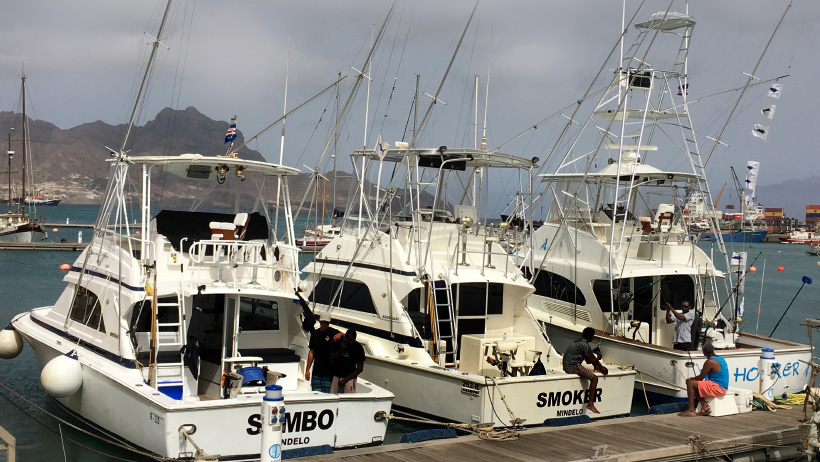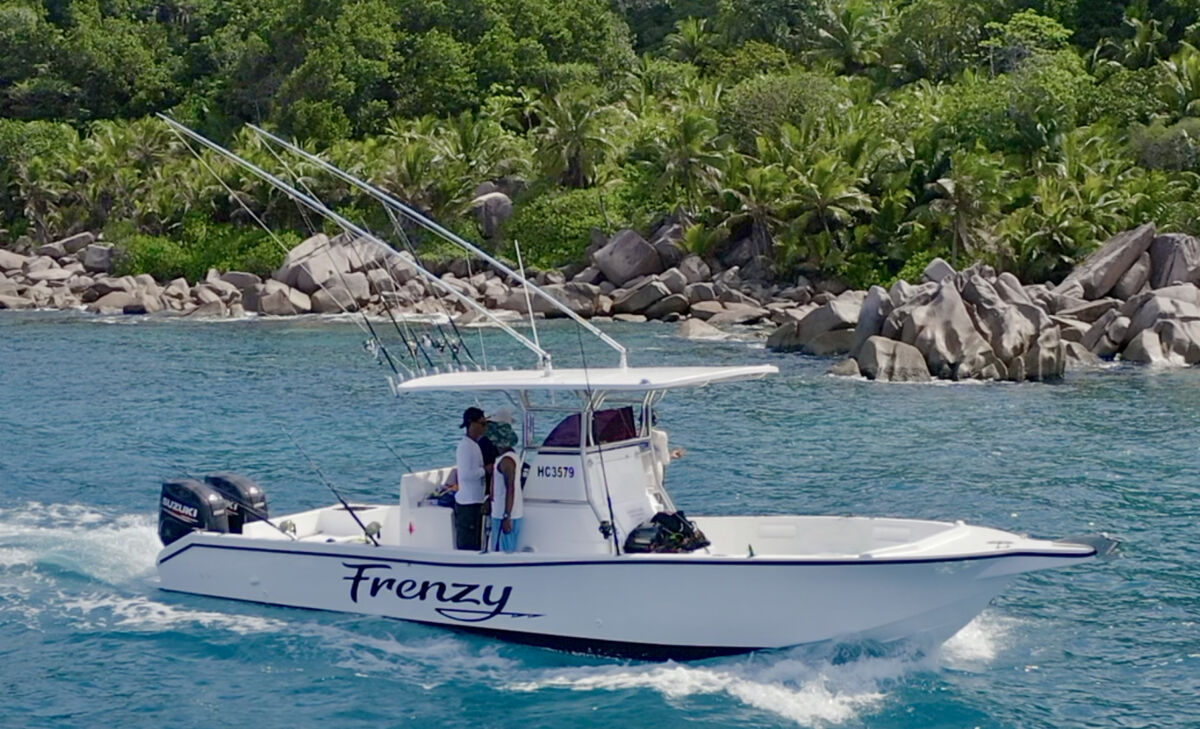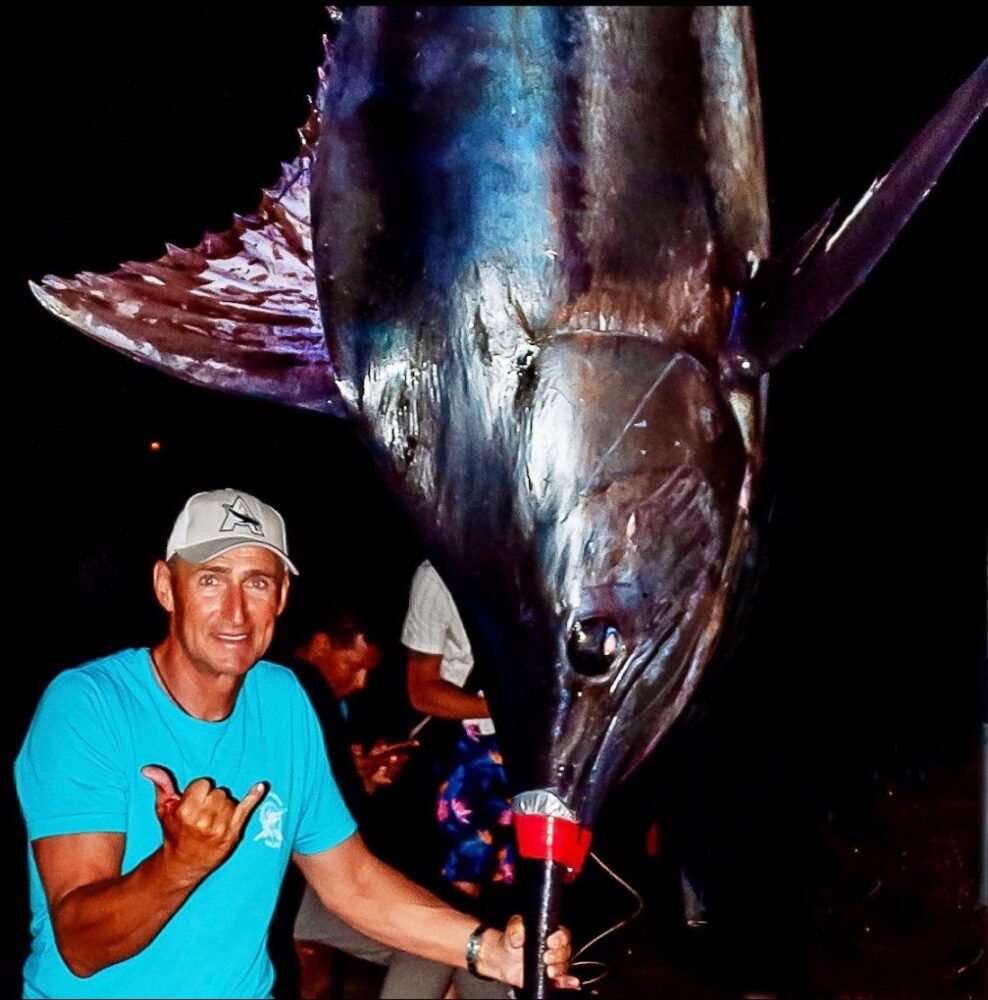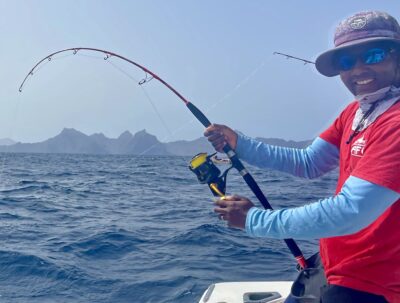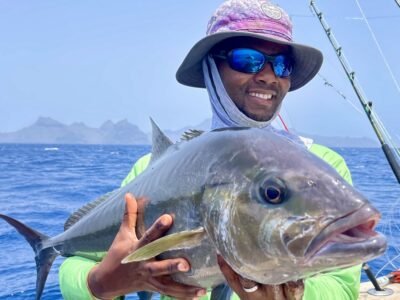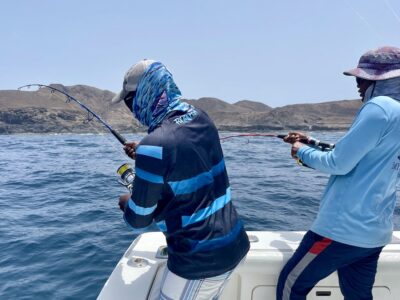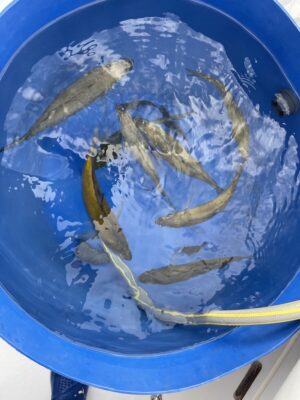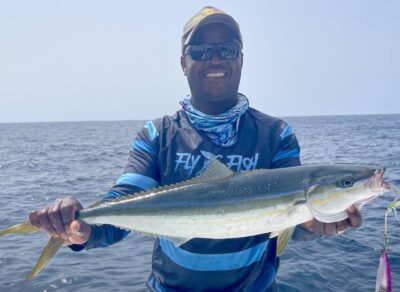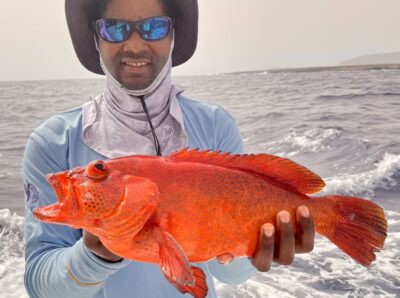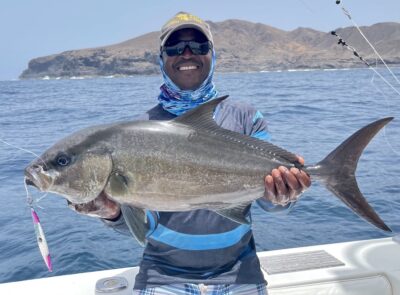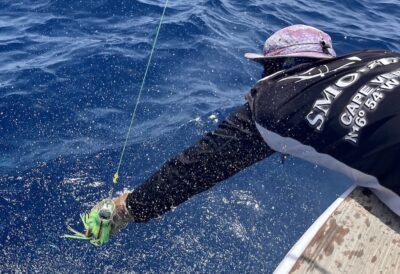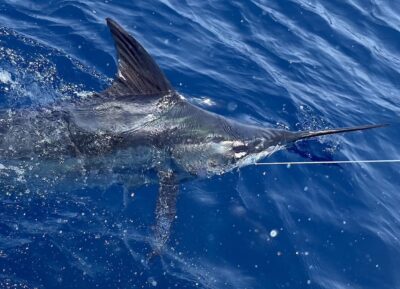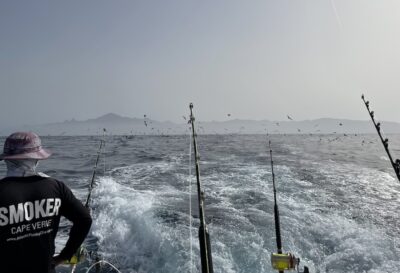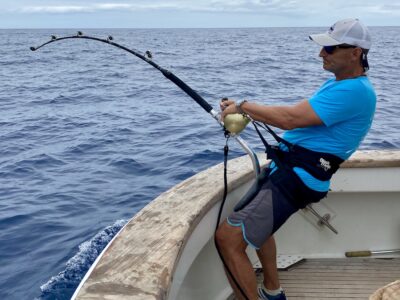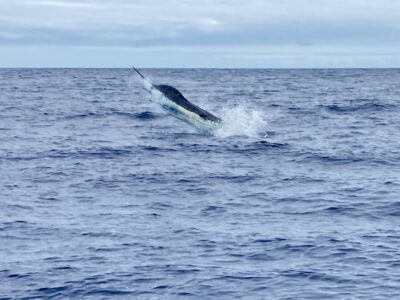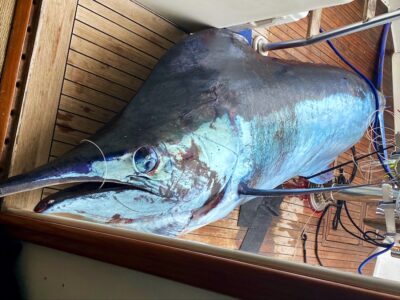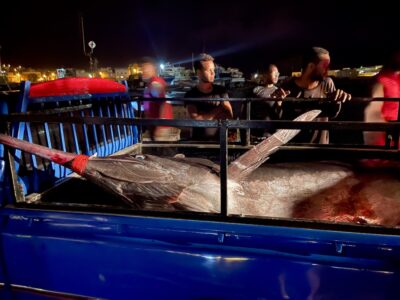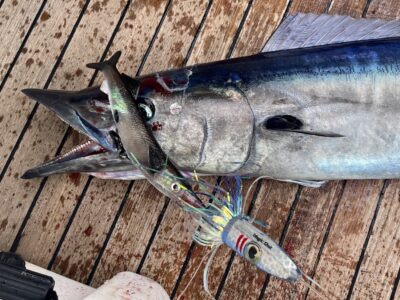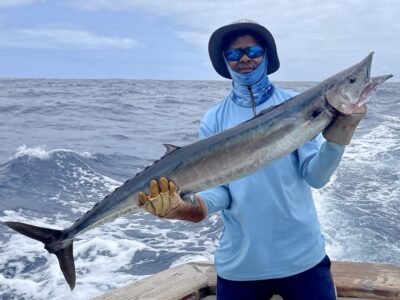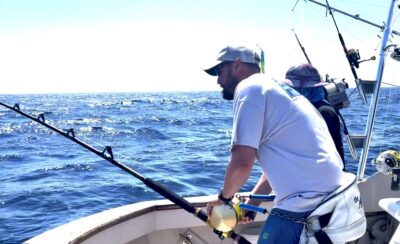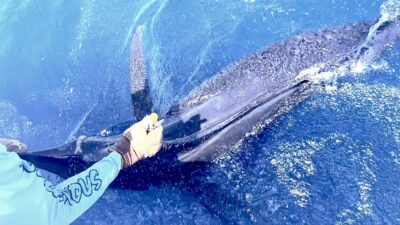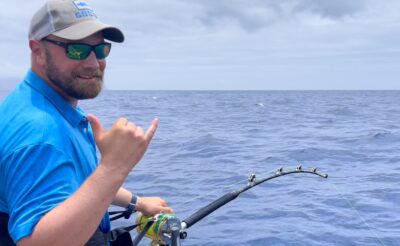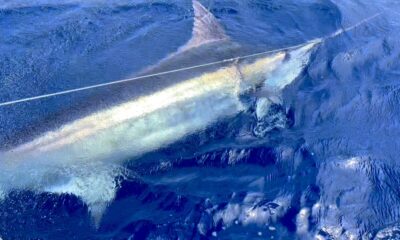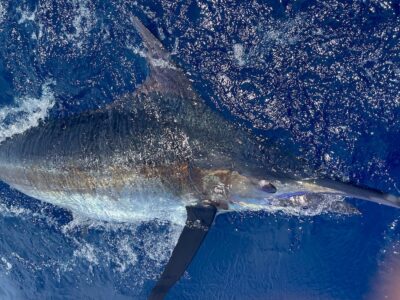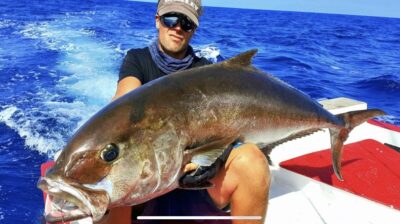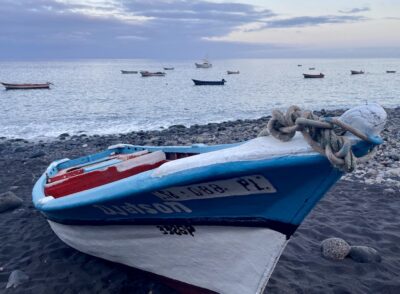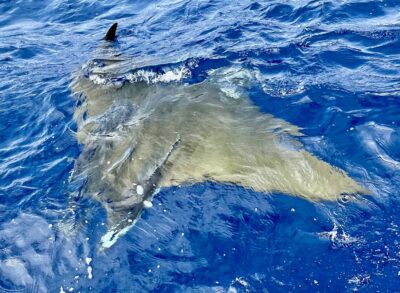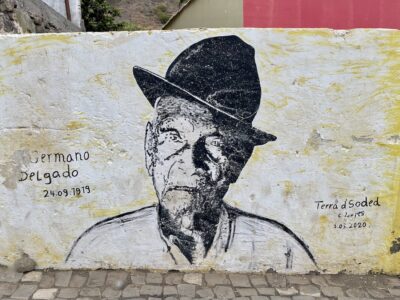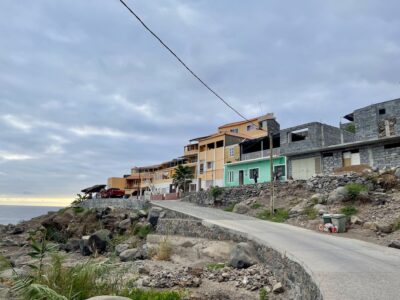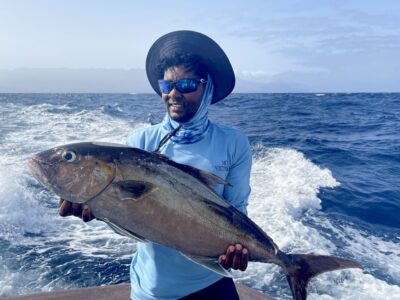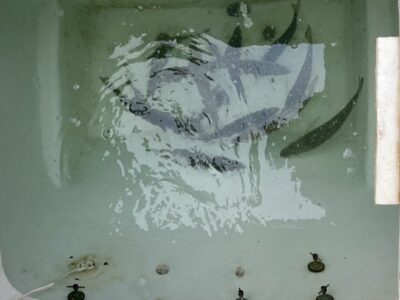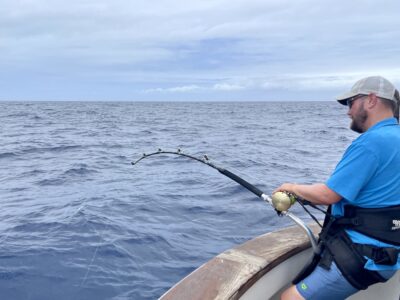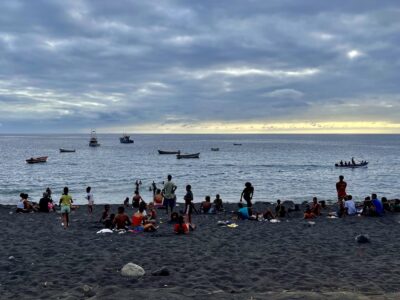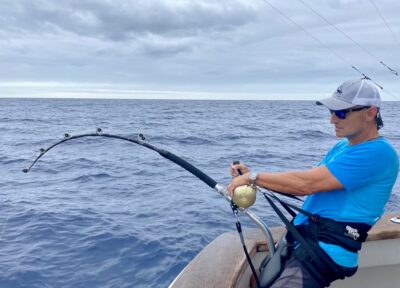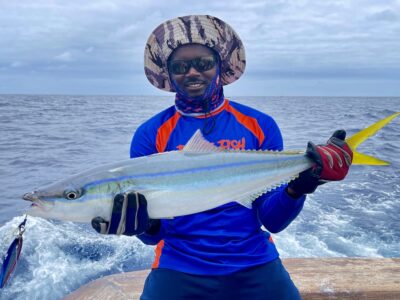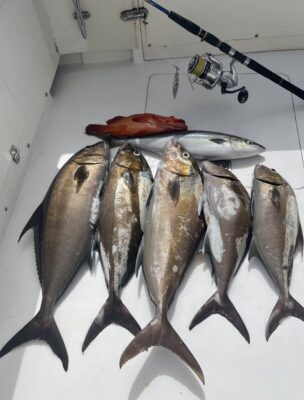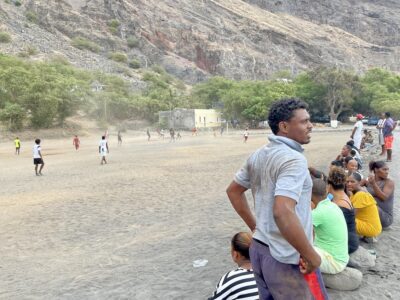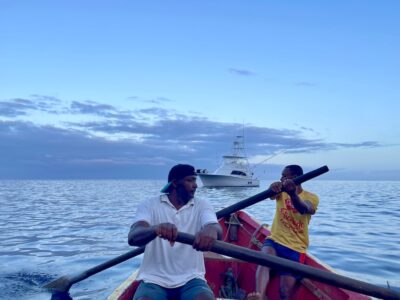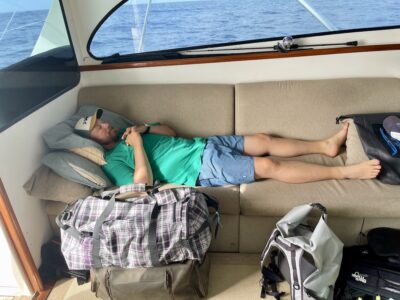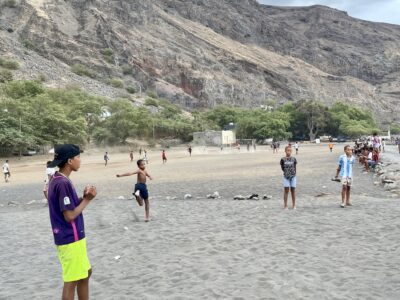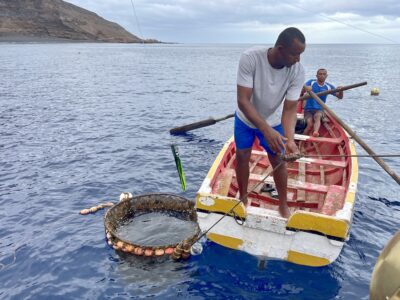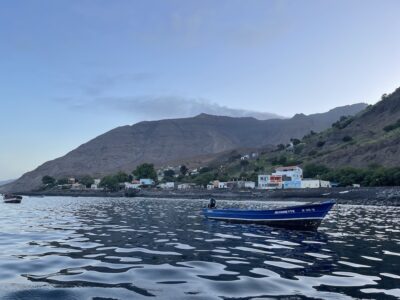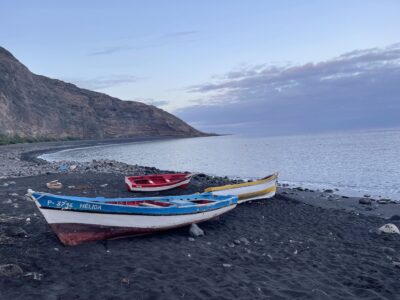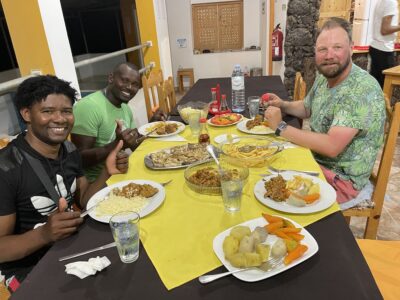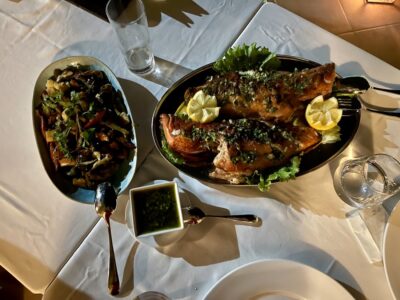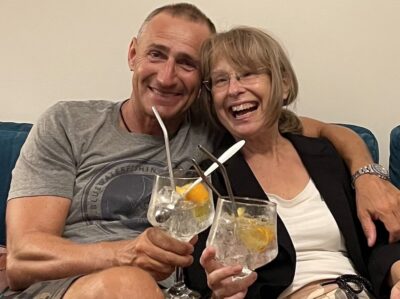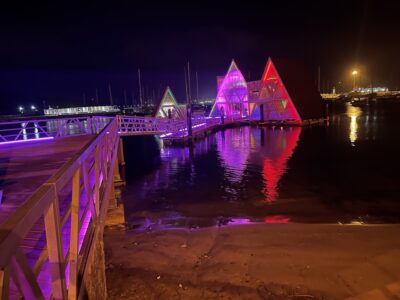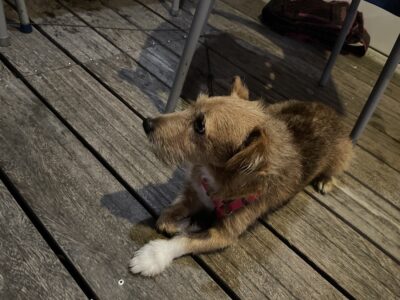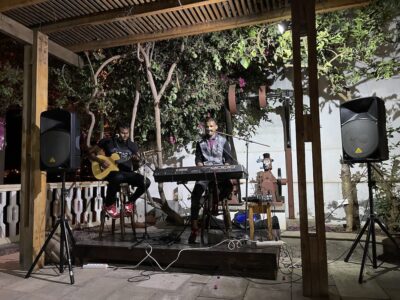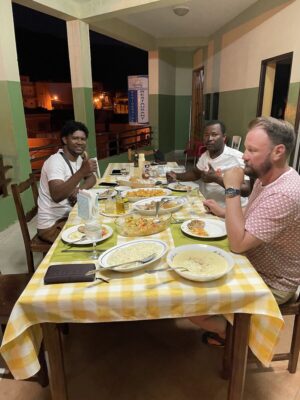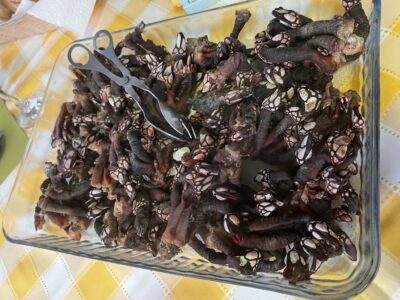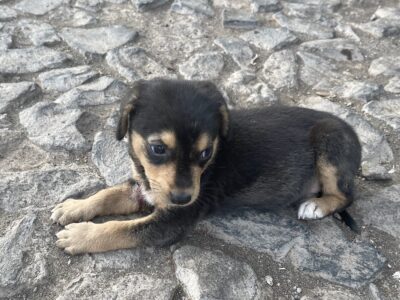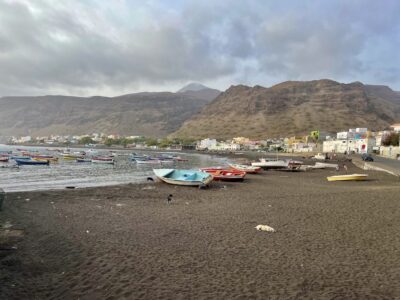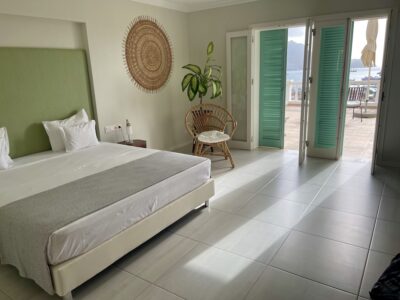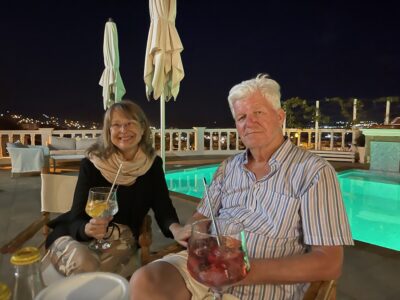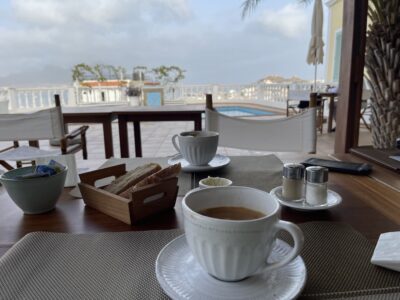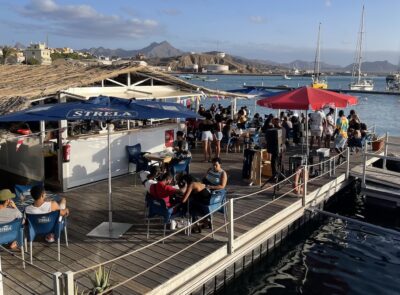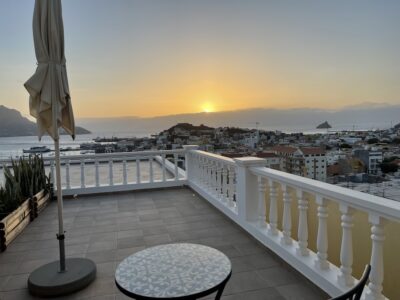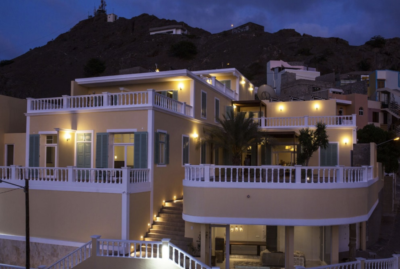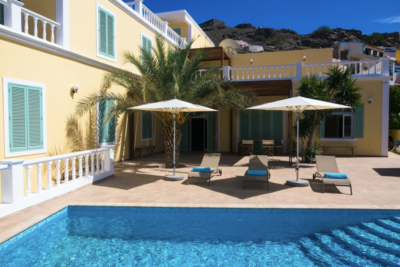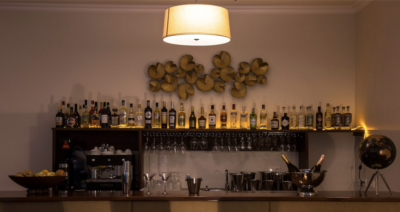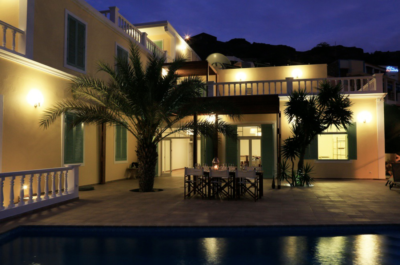Quality rather than Quantity
Fishing off Cape Verde in July/August
We made our plans for 19 angling trips. My fishing buddy Marco and I started with 10 days on Smoker and fished the remaining days on Hooker. The crew consisted of skipper Wilson and our mates Papau, Manti and Ja alternately for a so-called mixed fishing trip including trolling, jigging and live-baiting.
The omens were excellent, especially since huge numbers of marlin had been caught to the north of Sao Vicente over the previous two weeks, so we set off in a northerly direction full of hope. However, the current had changed and the fish had unfortunately disappeared – bad luck.
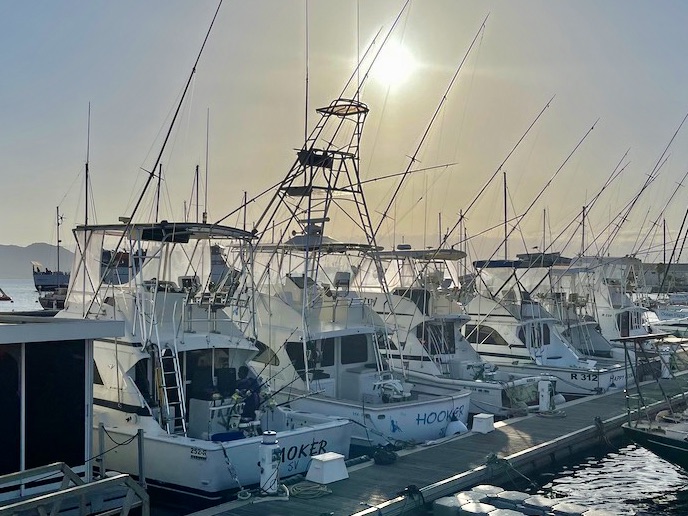
Looking for the marlins
We now began searching for fish which turned out to be quite a tough exercise. Apart from us there were very few charter boats in action and we first had to find our fish. Now and again, we had occasional contacts with marlins, but really not many. We relaxed the daily routine by stopping at several hot-spots for a bit of jigging. This produced a wide range of fish weighing up to 40 lbs. Regrettably, the really big amberjacks were conspicuous by their absence.
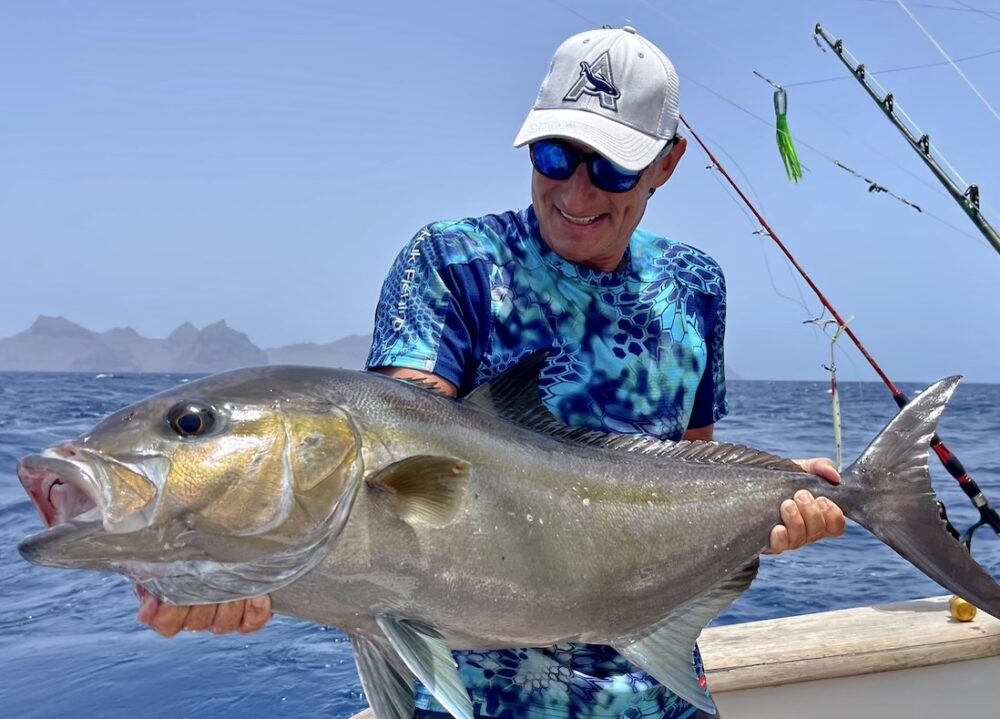
Big tuna off San Nicolau
After a couple of days, we moved from Sao Vicente to San Nicolau where the local fishermen were said to be catching large numbers of big tuna. By the time we arrived the tuna had disappeared, of course. We really were going through an unlucky patch. Only the weather remained fine and true to form the whole time, hardly any wind and calm seas. We fished for five days in San Nicolao on the Bank and off Raso. By pure chance we made contact with a marlin while catching bait fish when a big specimen in the region of 700 lbs suddenly surfaced behind the boat in shallow waters. A flying fish pitch-bait was cast immediately and the marlin, lit up brightly in turquoise, sped towards it and took the bait – what a sight. After the first jump the marlin threw the hook – phew!
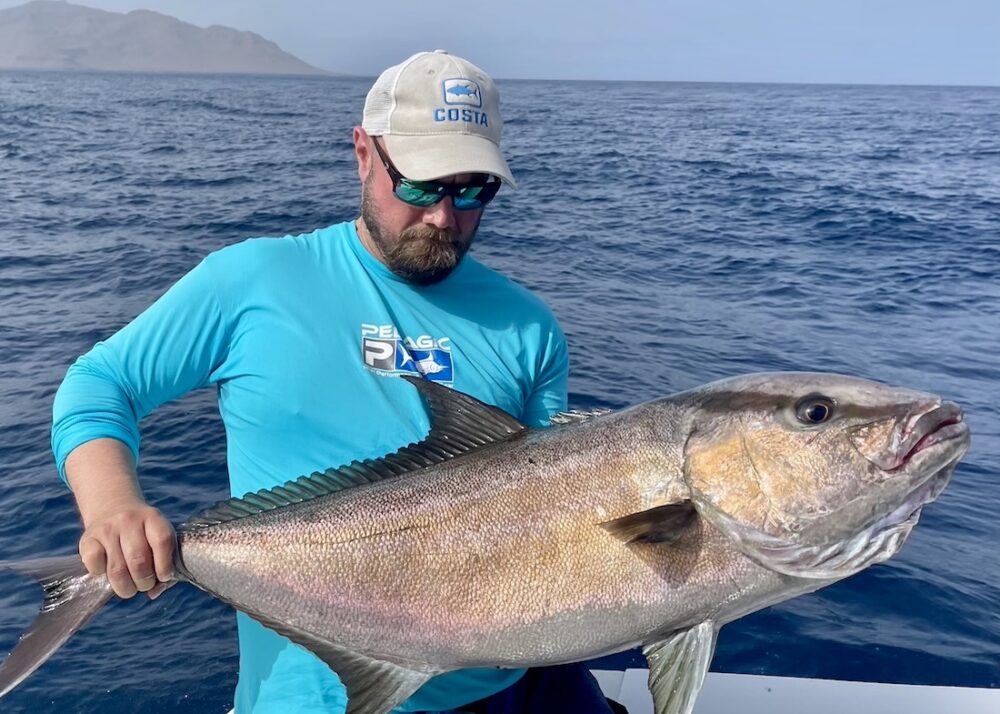
The first marlin
We decided to return to Sao Vicente to try our luck to the south and east of the island. The water looked good and, from nowhere, we had a double-header with a 300 pounder behind the lure and a 600-pounder following the teasers. The smaller marlin was hooked and released after a short fight. The bigger of the two was only interested in the teaser and completely ignored the bonito we offered. Talk about hard luck.
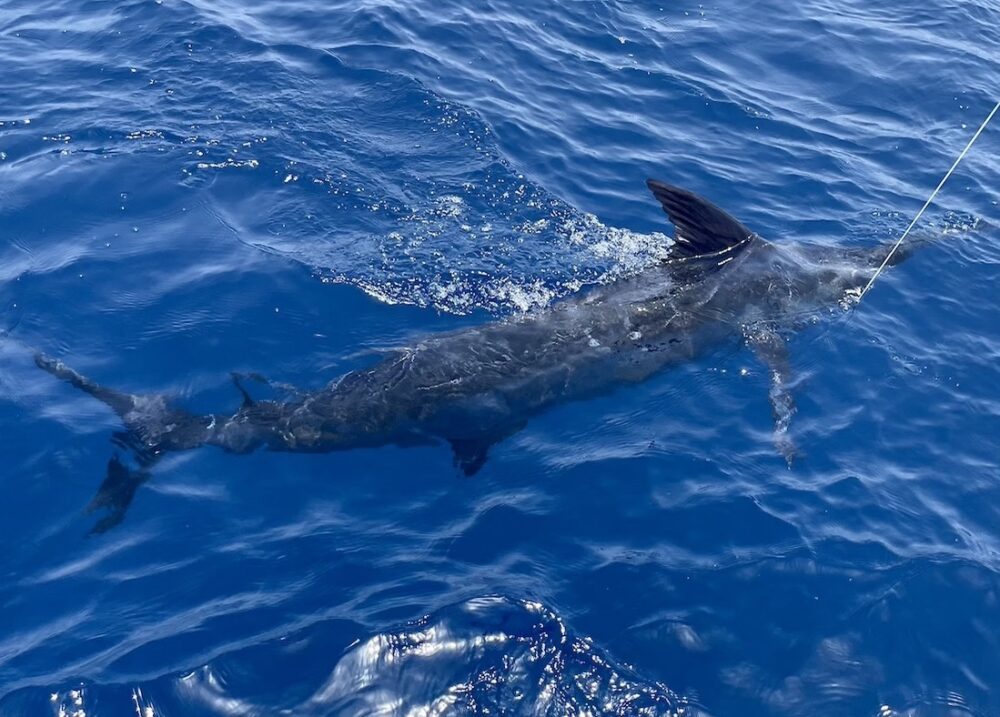
Off to Santo Antao
On day 11 we switched to our boat, the Hooker, for the rest of the trip. We fished in the same places once again, but without success. We turned to the north for a day, but there was nothing there, either. We decided to fish in the lee of the mountains off Santo Antao. Towards lunchtime, we spent an hour jigging and caught the usual candidates. All of a sudden, a marlin cruised by our jigging spot – we just couldn’t believe it. Since we were only catching small fry, we again tried our luck targeting marlin.

Left Teaser
It didn’t take long for a good fish to attack all our teasers. A pitch-bait (a flying fish) was cast out and it was action stations on the Hooker because we could see it was a very big specimen. We always have two stand-up rods ready for action, one set up for smaller fish with 50 lb. stand-up gear, a thinner leader and small hook, and the other one a so-called big-pitch equipped with 80 lb. gear, a stronger leader and large hook.
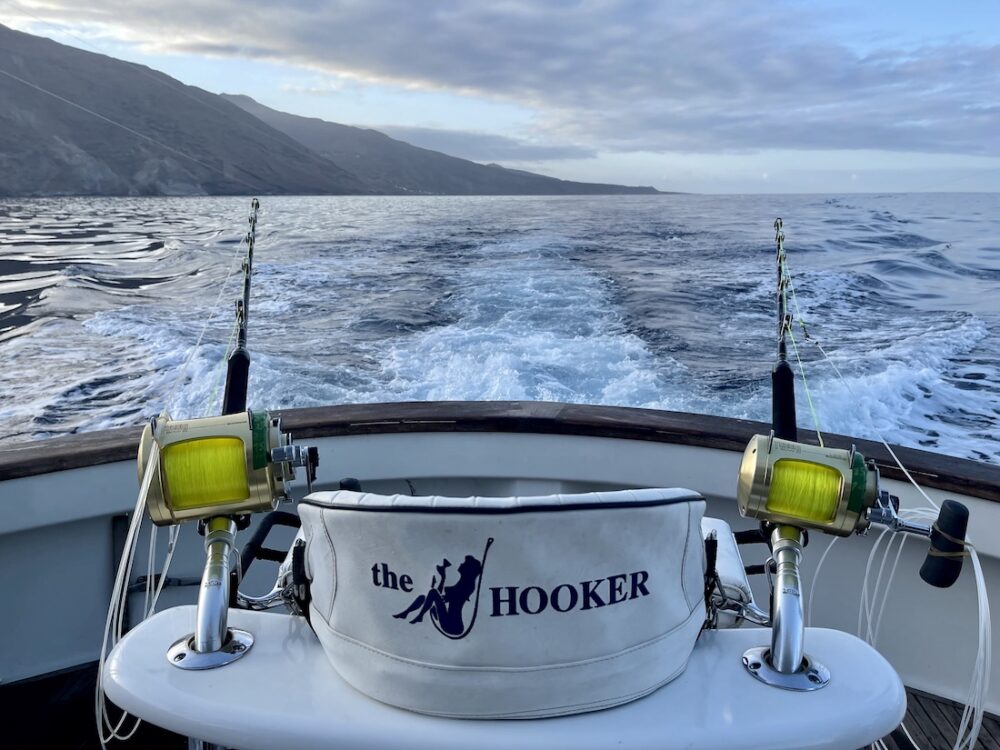
Grandersize
In the heat of the moment, we pitched the bait-fish on the 50 lb. setup. When the marlin swallowed the bait and was hooked, it jumped out of the water several times. It quickly became apparent that this was a fish capable of cracking the magical 1,000 lb. mark. After 35 minutes we got it alongside on the leader for the first time but were unable to apply too much pressure due to the comparatively thin leader material and had to let the fish run. After almost an hour we had leadered the marlin a couple of times but always had to let it run. After an hour and a quarter, the marlin began to tire and at long last we were able to get it on alongside. We decided to take the fish.
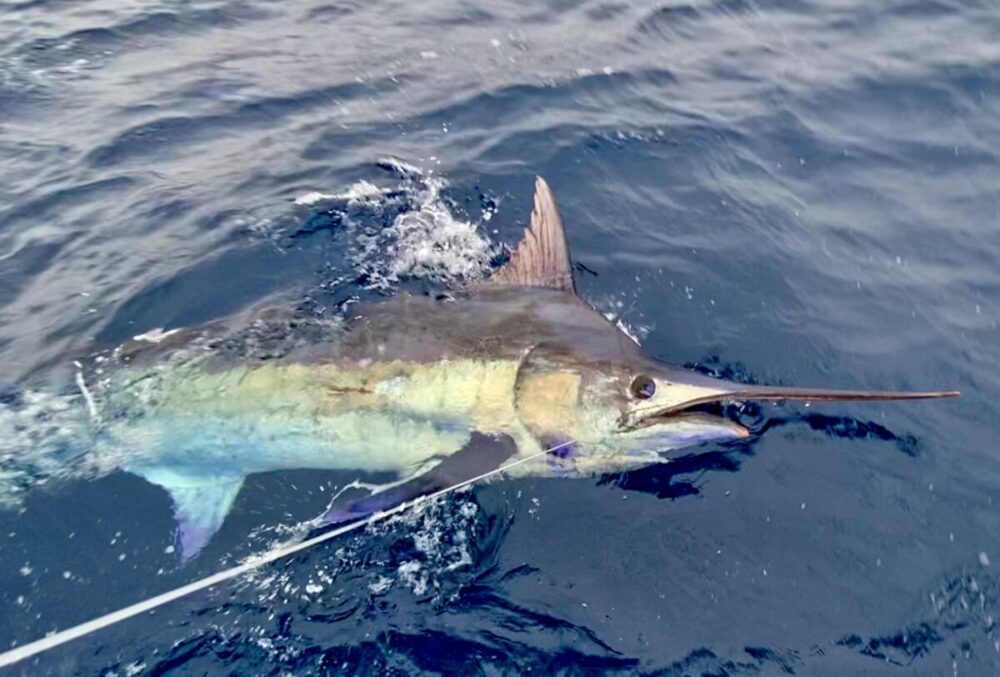
Back to Sao Vicente for weighing
On our way back to Sao Vicente (the only place where it is possible to properly weigh a fish of this size) we measured the marlin and repeatedly calculated its approximate weight using the IGFA formula. It soon became clear it was going to be close thing. The scales stopped at 442 kg (972 lbs.) A big fish of grander calibre… a few inches more in length or girth, three fat bonitos in its belly and the 1,000 lb. mark would have been reached. We donated part of the fish to the Mindelo orphanage and the remainder was distributed amongst the crew’s families – this was greatly appreciated.
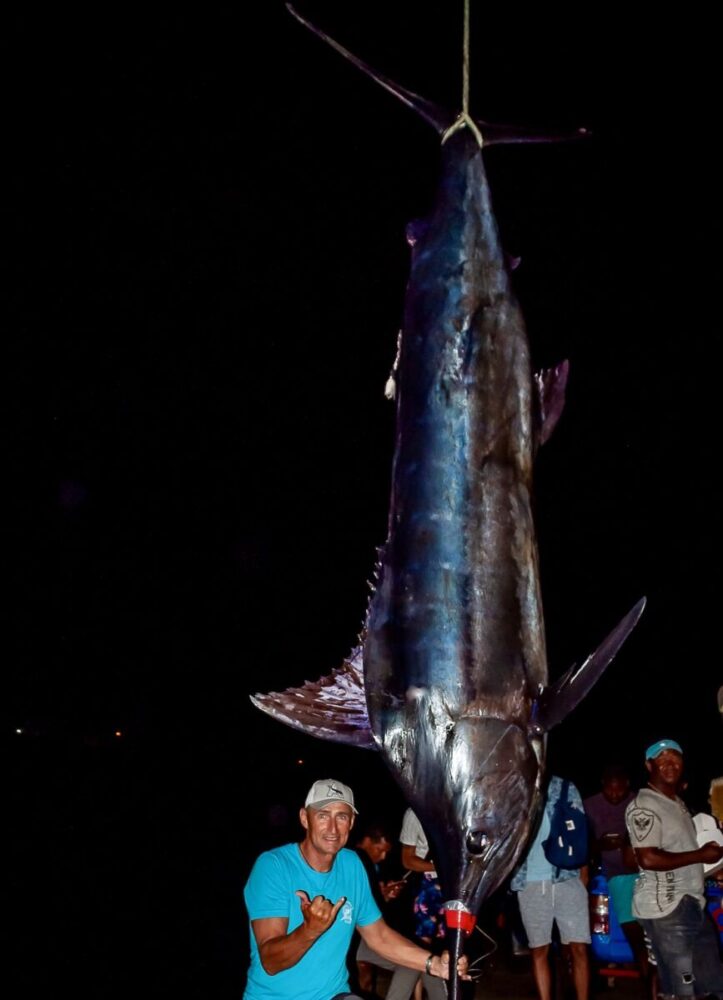
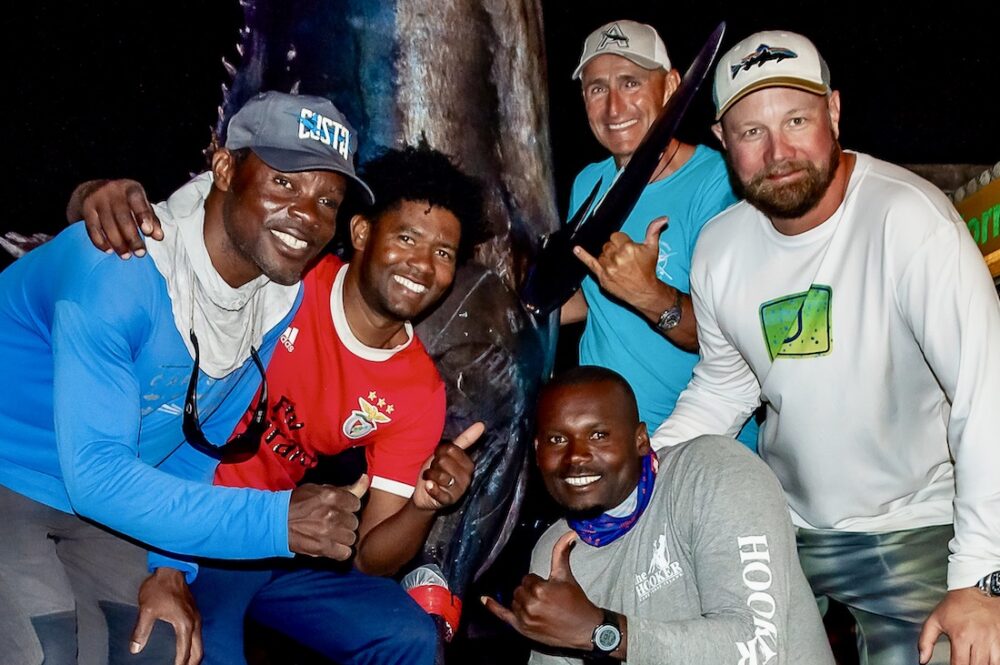
Off to Nord-West-Bank
The next day saw us returning to Santo Antao where we were to fish the North-West Bank for the next couple of days. Here we caught wahoo, tuna and, when jigging, amberjacks of up to 30 lbs. We did have one marlin tracking the teasers for a short while and another strike on our lure but without a hook-up.
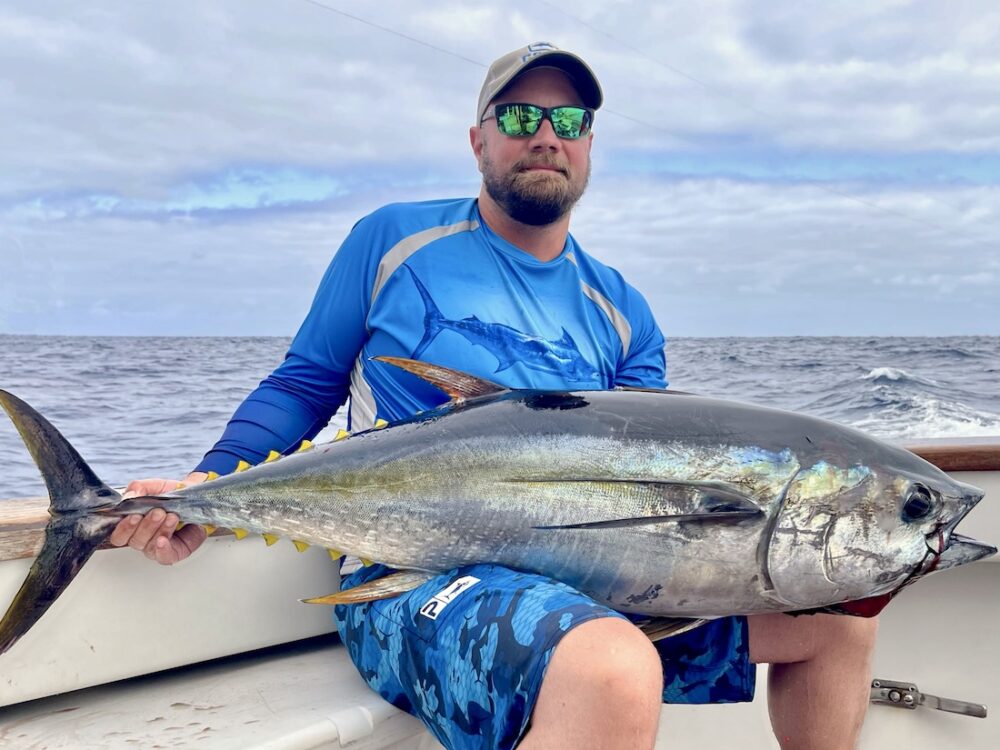
Back to Sao Vicente
The last two days of our trip were spent fishing the waters around Sao Vicente. We caught a cracking 400 lb. marlin to the north of the island but the last day turned out to be yet another stunner.
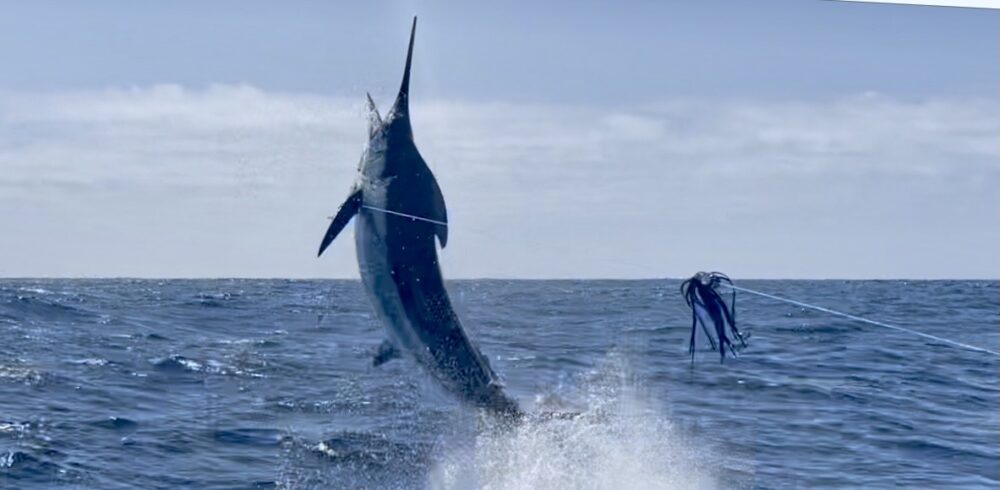
Grandersize number two
We were just off the San Pedro Bank when another huge marlin appeared from nowhere chasing our teasers. The pitch bait was cast (again on the 50 lb. class gear). The marlin immediately devoured the bonito and disappeared down into the depths. It really was a big fish. Marco was handling the rod and the fish re-appeared on the surface for a short time after some 20 minutes, but it plunged down again strongly. We saw the double-line for the first time after an hour but didn’t manage to grab the leader. We had our next chance after an hour and 55 minutes by which time the marlin had tired and gradually come up to the surface. It certainly was a huge specimen which might well have passed the magical grander mark. However, none of us was really sure about it so we decided to release it. We simply couldn’t face up to killing a second marlin weighing just under 1,000 lbs. in one week. The giant swam slowly and wearily into the depths. We were unable to believe our luck. To catch two blue marlins in grander format on one trip is an absolutely world-class effort and an achievement hard to beat. We soon forgot all about the previous lean spell.
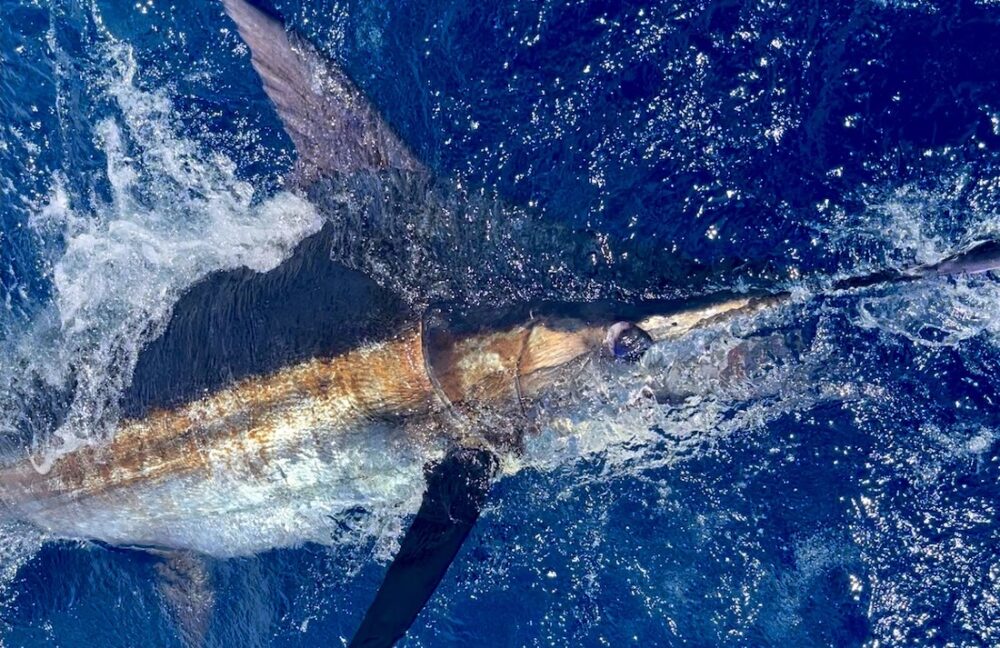
Summary
Over the 19 days we caught 4 blue marlins out of 10. At first sight this doesn’t sound like a lot but this is not unusual for the month of July because the larger numbers disappear and only a few of the heavyweights stay around the hotspots. If you have set your sights on capturing a grander-sized fish and are prepared to fish for a few days without a strike, you can always count on a surprise at this time of year.
In terms of jigging and live-bait fishing, this trip was very disappointing. In previous years we had always caught big fish, but we were out of luck this time, unfortunately. The fact that Cape Verde can still produce huge amberjacks was demonstrated by a local boat which caught a specimen weighing 62 kg (137 lbs.)
Videos:
Contact for inquiries and bookings:
Matthias Henningsen
www.atlanticfishingcharter.com
Stephan Kreupl
We fished on our boats “SMOKER” and “THE HOOKER” with skipper Wilson and mates Papau, Manti and Ja. Thanks a million guys you really did a great job.
Tight Lines
Stephan Kreupl, August 2021.
